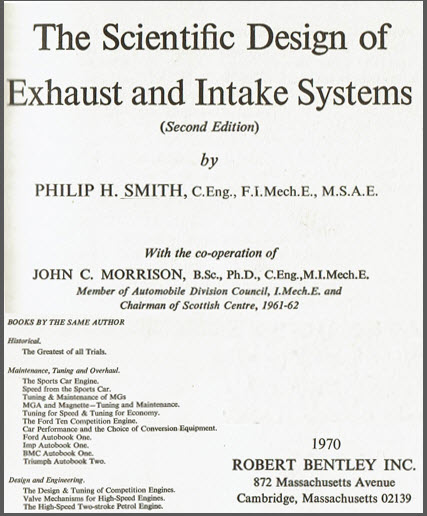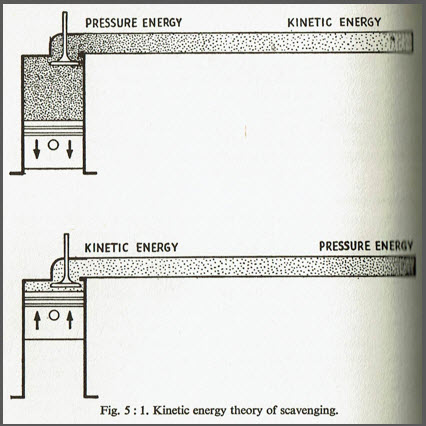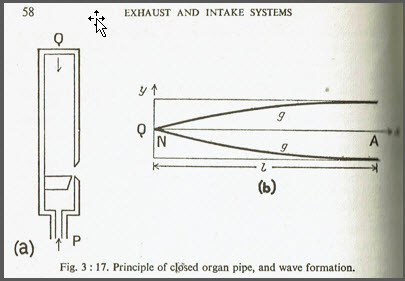Thanks guys. I will get some installed photos out later this week – and perhaps a video with the exhaust note too . . . So far I am pleased with how it sounds . . . and even more with how it runs, though I am just beginning to sort through the tuning . . .
As for the questions of why the ‘small pipes’ and why the ‘resonator chamber’ – the answers are pretty straight forward and nothing new. My instructors for the design elements on this exhaust system are Phil Smith:

and David Vizard:
SuperChevy The Phil Smith book is a must read. The most important lesson is his fundamental concept of how pressure energy at an exhaust port exhibits kinetic energy on the ambient air column in the pipe (a pumping action) that eventually leads to kinetic energy at the exhaust port (suction - scavenging) once the downstream column is moving:

David Vizard in turn puts this concept into hard-and-fast terms with his own dyno testing.
Vizard teaches us that a straight section of exhaust tube flows 115 CFM per square inch – and that each HP of engine output requires 2.2 CFM . . . and nothing more. In addition one is better to err on the side of to little exhaust pipe then to much. Putting the Vizard formulas to work on my stroked 216 (now a 230) it is perhaps capable of 140-150HP or 70-75HP per head pipe. With .065” wall 1.5” pipes we’re at 1.37” ID roughly ~1.474 square inches – which by formula flows 169.5 CFM and should support 77HP. So the head pipes aren't small at all - they're just right.
Moreover, both Vizard and Smith teach us that the further one gets from the exhaust port – the cooler the exhaust gases become. As the exhaust gas cools (counter-intuitive to some) it actually decompresses and slows down. Reducing the mid-pipe and tail-pipe size helps to maintain velocity and therefore full system scavenging effects.
On the resonator chamber – Smith teaches us about resonance frequencies in a pipe that is open at both ends and draws comparisons to frequencies in a pipe-organ where one end of the pipe is completely closed - and how this translates into effective muffler designs. From a practical perspective I needed to transition from 1.75” to 1.25” pipe. Adding the 1’ section of straight 1.75” creates a pipe organ like resonance chamber reflecting sound waves back toward the bulkhead in the muffler, even though it is not completely closed by the reducing cone

As to whether or not 1' is too long or too short for the chamber - is anybody's guess. I chose it for practical reasons: frame hanger placement.
Regards,
Stock49

